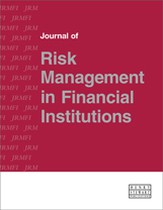ESG rating as input for a sustainability capital buffer
Abstract
In this paper, we give a state of the art overview of what ESG ratings are, which different types of these ratings can be distinguished and how they could be used in banking regulation to adjust banks’ capital requirements with the goal to promote green finance and reduce climate-related risks within the investments of banks. Based on experience collected with other supporting factors within banking regulation, like the SME supporting factor, we show how a Green Supporting Factor or a Brown Penalty Factor could be implemented to promote green finance or punish brown finance, respectively, and include climate risk into Pillar I capital requirements. We also discuss an approach combining these two binary factors and conclude with a proposition to use ESG ratings to derive capital requirements add-ons. After all, ESG ratings take a broader perspective on sustainability and provide a more granular scale ranging from sustainable to non-sustainable rating classes. This approach ensures that green finance investments can be promoted via adjustments of capital requirements without a significant decrease of the total capital in the banking sector and, therefore, without the reduction of the stability of the financial market.
The full article is available to subscribers to the journal.
Author's Biography
Martin Neisen is the global Basel IV leader of PwC and coordinates PwC’s initiative for the implementation of Basel IV. This initiative covers all aspects regarding the impact and the implementation of Basel IV, including strategic implications, standardised approaches, internal models, business implications, IT and also knowledge management. He leads the regulatory management department in PwC Europe and is our central expert in the area of Basel II/III/IV and projects regarding other regulatory topics.
Benjamin Bruhn is a Manager in the Risk & Regulation division and a senior ESG and rating expert at PricewaterhouseCoopers GmbH (PwC) in Frankfurt am Main, focusing on the integration of sustainability risks into financial institutions’ risk management, as well as on quantitative risk models and data analytics.
Dieter Lienland is a Director in the Risk & Regulation division and leads the ESG risk cluster at PricewaterhouseCoopers GmbH (PwC) in Düsseldorf, focusing on the integration of sustainability risks into financial institutions’ risk management, as well as on climate risk stress testing and reporting.
Citation
Neisen, Martin, Bruhn, Benjamin and Lienland, Dieter (2021, December 1). ESG rating as input for a sustainability capital buffer. In the Journal of Risk Management in Financial Institutions, Volume 15, Issue 1. https://doi.org/10.69554/CWUZ7977.Publications LLP
